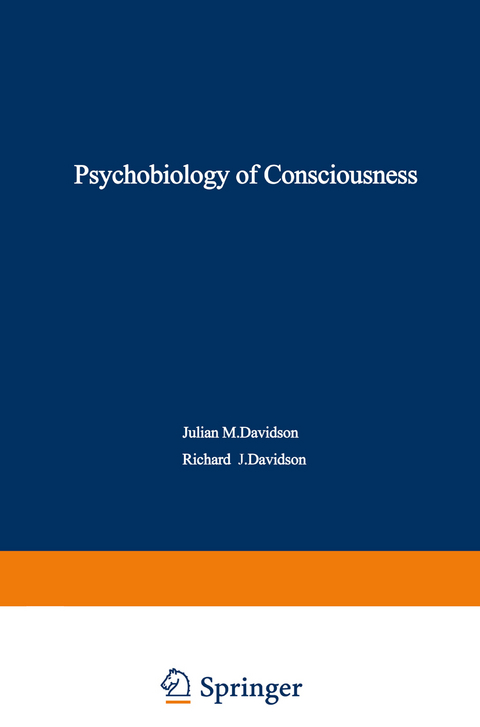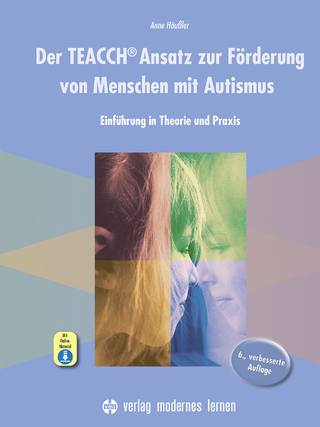
The Psychobiology of Consciousness
Springer-Verlag New York Inc.
978-1-4684-3458-3 (ISBN)
1 Introduction: The Scientific Study of Human Consciousness in Psychobiological Perspective.- References.- 2 Consciousness and Information Processing: A Biocognitive Perspective.- 1. Introduction.- 2. A Brief Historical Overview.- 3. Consciousness, Unconsciousness, and Biocognitive Structures.- 4. Influences on Biocognitive Structures and Styles of Information Processing.- 5. On Making the Unconscious Conscious.- References.- 3 Mind, Brain, and Consciousness: The Organization of Competence and Conduct.- 1. Consciousness and Information Processing.- 2. Consciousness and Self-Consciousness.- 3. Consciousness and Feelings.- 4. Consciousness and Information Measurement.- 5. Consciousness and Competency.- 6. Consciousness and Perception.- 7. Consciousness and Mind.- References.- 4 Stress-Induced Behavior: Chemotherapy without Drugs.- 1. Stress-Induced Behavior.- 2. Stereotypy as a Consequence of Stress in Animals and Humans.- 3. Why Dopamine?.- 4. Summary.- References.- 5 Redundancy in the Nervous System as Substrate for Consciousness: Relation to the Anatomy and Chemistry of Remembering.- 1. Introduction.- 2. Localization of Memory Consolidation Function.- 3. Redundancy of the Central Nervous System.- 4. Redundancy as a Neurobiological Substrate of Consciousness.- 5. Biochemistry of Memory.- 6. Conclusion.- References.- 6 Multipotentiality: A Statistical Theory of Brain Function—Evidence and Implications.- References.- 7 Genetic Factors in EEG, Sleep, and Evoked Potentials.- 1. Introduction.- 2. The Electroencephalogram—Resting and Response Measures.- 3. Sleep.- 4. Evoked Potentials.- 5. Anatomic Features and Electrophysiology.- 6. Electrophysiology, Genetics, and Consciousness.- References.- 8 The Waking Stream of Consciousness.- 1. William James: Characteristics ofConsciousness.- 2. The Variety of Conscious Experience.- 3. A Basic Model.- 4. The Activities of Mind and Body.- 5. The Stream of Consciousness and Brain Activity.- 6. Fantasy, Emotion, and Visual Imagination.- References.- 9 The Emergence of Emotions and the Development of Consciousness in Infancy.- 1. Biological Processes, Emotions, and Consciousness.- 2. The Emergence of Emotions and Changes in Consciousness.- 3. Summary.- References.- 10 A Systems Approach to Consciousness.- 1. Introduction.- 2. Some Generalities about the Systems Approach.- 3. A Particular System Model.- 4. Consciousness.- 5. Conclusions.- References.- 11 A Systems Approach to Altered States of Consciousness.- 1. Introduction.- 2. Constructed Nature of Ordinary Consciousness.- 3. States of Consciousness.- 4. Mapping Experience.- 5. Discrete States of Consciousness.- 6. Individual Differences.- 7. Major Subsystems of Consciousness.- 8. Stabilization of Discrete States.- 9. Induction of a Discrete Altered State.- 10. Methodological Consequences of the Systems Approach.- References.- 12 The Psychobiology of Sexual Experience.- 1. Introduction.- 2. Physiology, Sensations, and Concepts of Sexuality.- 3. Orgasm as an Altered State of Consciousness (ASC).- 4. Sex Differences and the Role of Hormones.- 5. Summary.- References.- 13 The Psychophysiological Model of Meditation and Altered States of Consciousness: A Critical Review.- 1. The Meditative ASC.- 2. EEG Changes during Meditation.- 3. Oculomotor Processes and EEG.- 4. Meditation and Arousal.- 5. Specificity of the Meditative ASC.- 6. EEG, Arousal, and Sleep.- 7. Meditation and Attention.- 8. Meditation and Trance.- 9. Meditation and Brain-Wave Biofeedback.- 10. The Psychophysiological Principle.- 11. Meditation and the Psychophysiological Model.- References.- 14 Toward a Psychobiology of Transcendence: God in the Brain.- 1. An Argument for Implicit Knowledge in the Brain Sciences.- 2. The Pharmacological Bridge and the Modulation of Arousal and Fear.- 3. The Pharmacological Bridge and the Modulation of Rage.- 4. Neurobiological Transcendence: High-Dose Amphetamine, Cocaine, and the Hallucinogens.- 5. Neurobiological Antagonism of Amphetamine, Cocaine, the Hallucinogens, and Naturally Occurring Transient Hypomanic States by Lithium’s Effect on Serotonin Biosynthesis.- 6. Kindling of Temporal Lobe Limbic Structures: Raphe and Hippocampal Pyramidal Cells as Double Gates to Transcendence.- 7. Bipolar Affect Disorder, the Temporal Lobes, and Transcendent Consciousness.- 8. Syndromes of Temporal Lobe Disinhibition.- 9. The Activated Sleep Syndrome, the Drive-Arrest-Release Sequence in Biogenic Amine Neurons, and the Psychopharmacology of the Bipolar Affect Disorders.- 10. Religious Ecstasy and Conversion.- References.- 15 Prospects for the Scientific Observer of Perceptual Consciousness.- 1. Introduction.- 2. The Scientific Observer and the Problem of Mind and Matter: A Phenomenological Argument.- 3. The Scientific Observer and the Problem of Mind and Brain: An Abstract Argument.- 4. Conclusion.- References.
| Zusatzinfo | XVIII, 490 p. |
|---|---|
| Verlagsort | New York, NY |
| Sprache | englisch |
| Maße | 152 x 229 mm |
| Themenwelt | Geisteswissenschaften ► Psychologie ► Biopsychologie / Neurowissenschaften |
| Geisteswissenschaften ► Psychologie ► Test in der Psychologie | |
| Geisteswissenschaften ► Psychologie ► Verhaltenstherapie | |
| ISBN-10 | 1-4684-3458-6 / 1468434586 |
| ISBN-13 | 978-1-4684-3458-3 / 9781468434583 |
| Zustand | Neuware |
| Haben Sie eine Frage zum Produkt? |
aus dem Bereich


